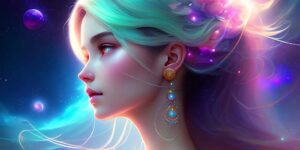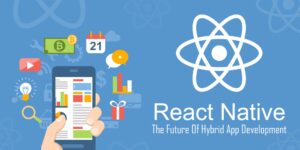The Future of Chatbots and AI Art

Generative Artificial Intelligence (AI) has come a long way in the past few years, and it’s now possible to create sophisticated chatbot systems that can understand human language, as well as generate images and other forms of art. Generative AI technologies such as ChatGPT or Bard are examples of how far generative AI has advanced. With ChatGPT, developers can create conversational chatbots that understand spoken English and can even generate their own natural language responses.
The potential applications of generative AI are far-reaching, from virtual assistants to autonomous robots. But one of the most exciting possibilities is the use of generative AI for creating artistic renderings such as images or music. In this tutorial, we’ll explore how to use generative AI to create art. We’ll look at two types of generative models — GPT-3 and diffusion models — and discuss how they can be used together to create beautiful, unique pieces of art. if you are looking for latest app development tools for your next project read this link first https://hybridcluster.com/the-unmatched-potential-of-react-native-app-development/

We’ll also discuss some of the practical applications of generative AI in the world of art. We’ll explore how generative AI can be used to create stunning works of art that are not only visually appealing but also technically complex and rich in meaning. Finally, we’ll examine some of the ethical considerations surrounding the use of generative AI for creating art, including potential copyright issues and questions about who “owns” the artwork created by generative AI models. By the end of this tutorial, you’ll have a better understanding of how to use generative AI for creating art and its potential implications.
Generative AI for Art Generation
Generative Artificial Intelligence is a set of algorithms that can be used to generate novel data from existing data sets. The most common uses for generative AI include image synthesis, natural language generation, and music synthesis. Generative models can be trained on existing data, such as images or audio clips, to generate novel data of the same type. In the context of art creation, generative models can be used to create unique works of art from existing ones.
The two most commonly used types of generative models in art generation are GPT-3 and diffusion models.
GPT-3
GPT-3 (Generative Pre-trained Transformer) is an advanced natural language processing model that can generate human-like language from a given context. By training the GPT-3 model on existing works of art, it’s possible to generate new pieces of artwork with similar characteristics.
Diffusion models
Diffusion models, on the other hand, take existing images and “diffuse” them by adding elements from other sources. For example, a diffusion model might take an existing painting and add elements from photographs or other works of art to create a new piece of artwork. This technique is often used to create visually striking images that combine elements from multiple sources.
Generative AI Tutorial: Creating Artistic Renderings with GPT and Diffusion Models

In this tutorial, we’ll explore how to create artistic renderings using generative AI models. We’ll start by training a GPT-3 model on existing works of art to generate new pieces of artwork that are similar but unique. We’ll then explore how to use diffusion models to combine elements from multiple sources and create visually striking images.
Practical Applications and Ethical Considerations for Generative AI Art
Once you’ve created your own generative AI art, there are a few practical considerations to keep in mind. One of the most important is copyright law, which applies to works of art generated by AI just as it does to human-created works. It’s important to be mindful of copyright law when creating generative AI art and to understand the implications before releasing any artwork into the public domain.
Finally, there are also ethical considerations surrounding the use of generative AI for creating art. Who “owns” the art generated by a generative AI model? Does the creator of the artwork own it, or can anyone use it as they please? These are important questions to consider when creating generative AI-generated artwork.
By exploring these topics and understanding how to create artistic renderings with GPT-3 and diffusion models, you’ll be well-prepared to use generative AI for creating art. So get started now and create your own unique works of art!
Market Growth and Adoption
As generative AI technology continues to grow in popularity, the market for products utilizing AI art is expected to continue to expand. This growth is driven by the fact that generative AI can create artwork faster and more cost-effectively than traditional methods, making it a desirable option for businesses looking to create unique visual content.
Chatbot Market Growth through 2024
The market for AI chatbots is expected to grow significantly in the coming years, as more businesses recognize their potential and adopt them into their customer service operations. According to a report by Allied Market Research, the global chatbot market size was estimated at $3.7 billion in 2018 and is projected to reach $13.2 billion by 2024, growing at a compound annual growth rate of 25.2%. This growth is fueled by the increasing use and adoption of chatbots in customer service, marketing, sales, and other applications.
What is ChatGPT?

ChatGPT is a chatbot platform that combines GPT-3 and diffusion models to create unique works of art. ChatGPT allows users to generate artwork quickly and easily, without the need for manual input. With its intuitive interface, users can create stunning pieces of generative AI art in minutes, perfect for use in marketing campaigns or as custom artwork for a client.
What is Bard?

Bard is a generative AI platform that uses GPT-3 and diffusion models to create realistic artwork. Unlike other platforms, Bard allows users to customize their artwork by choosing specific color palettes and textures. Additionally, Bard offers an intuitive online editor for fine-tuning the generated artwork and adding unique details for a truly custom look. This makes Bard perfect for anyone looking to generate stunning artwork with minimal time and effort.
Differences between Bard and ChatGPT
Although both Bard and ChatGPT use GPT-3 and diffusion models to generate artwork, there are some differences between the two platforms. For one thing, Bard allows users to customize their artwork with specific color palettes and textures while ChatGPT does not. Additionally, Bard offers an online editor for fine-tuning images and adding unique details, whereas ChatGPT does not. As a result, Bard is the better choice for anyone looking to create truly custom artwork with minimal effort.
Bard vs ChatGPT: Which is Right for You?
When it comes to creating generative AI artwork, both Bard and ChatGPT offer powerful tools for quickly and easily generating unique works of art. However, depending on your requirements and preferences, one platform may be better suited to your needs than the other.
If you’re looking for a platform that allows you to customize your artwork with specific color palettes and textures, then Bard is the clear choice. On the other hand, if you don’t require much customization and just want to generate artwork quickly and easily, then ChatGPT may be a better fit for you. If you are still unsure, you can always welcome to take the help for Hybrid Cluster, a web development and tech company.
Final Words
Generative AI is a powerful tool for creating unique works of art, but it’s important to understand the implications of using generative AI models before releasing any artwork into the public domain. As this tutorial has demonstrated, both GPT-3 and diffusion models can be used to create stunning works of art with minimal effort. With a little practice and knowledge of how to use generative AI, you can create truly unique artwork and one of a kind.
In addition to generating art with GPT-3 and diffusion models, there are other ways to use generative AI for creative pursuits such as music composition, text generation, and more. As the technology continues to evolve, we can expect to see even more applications of generative AI in the future. So get started now and explore all the possibilities that generative AI has to offer!





